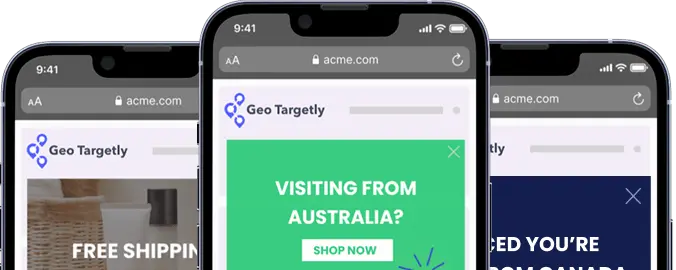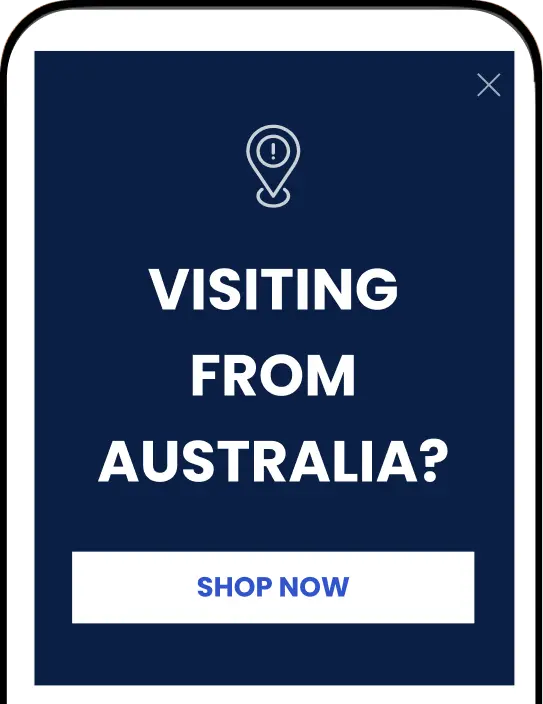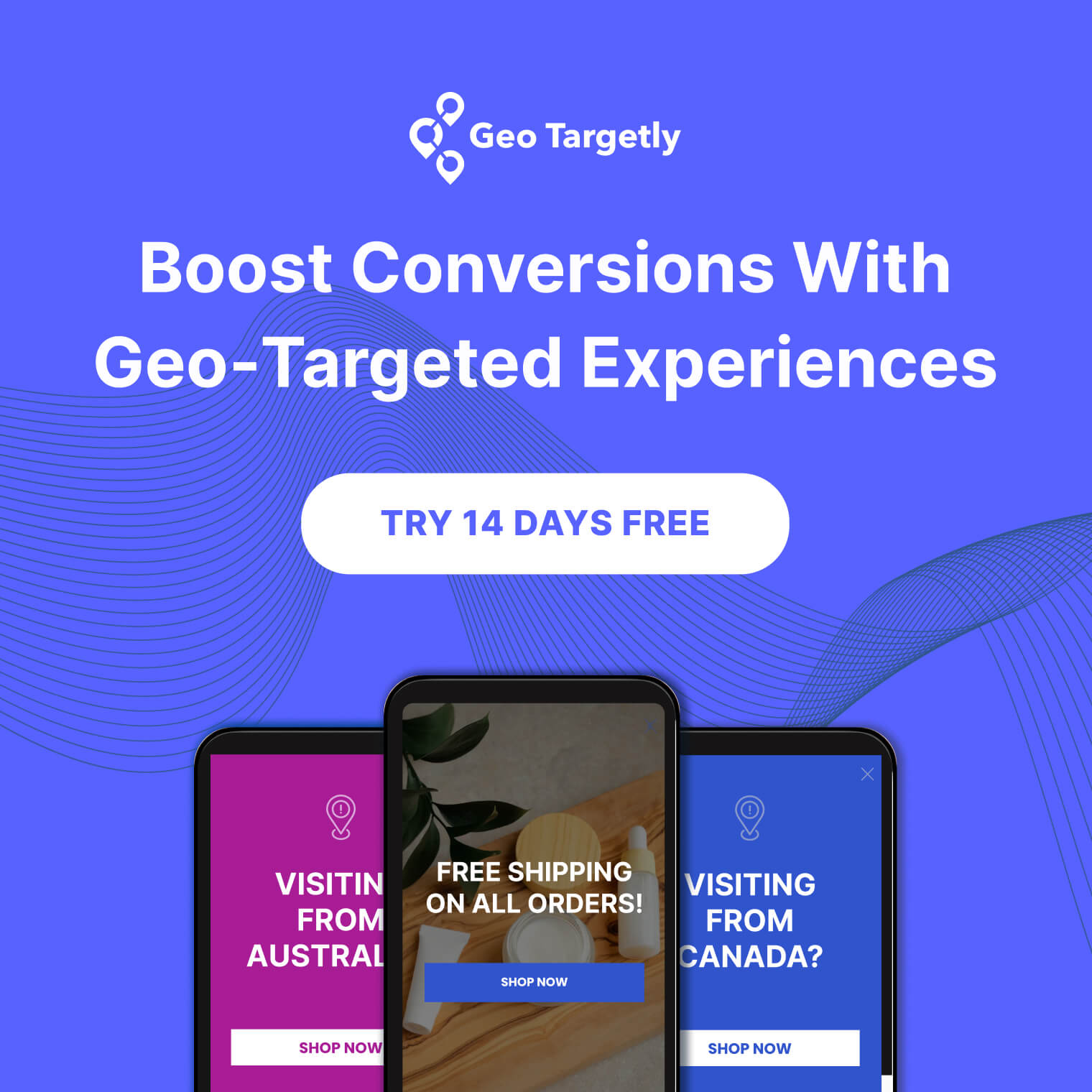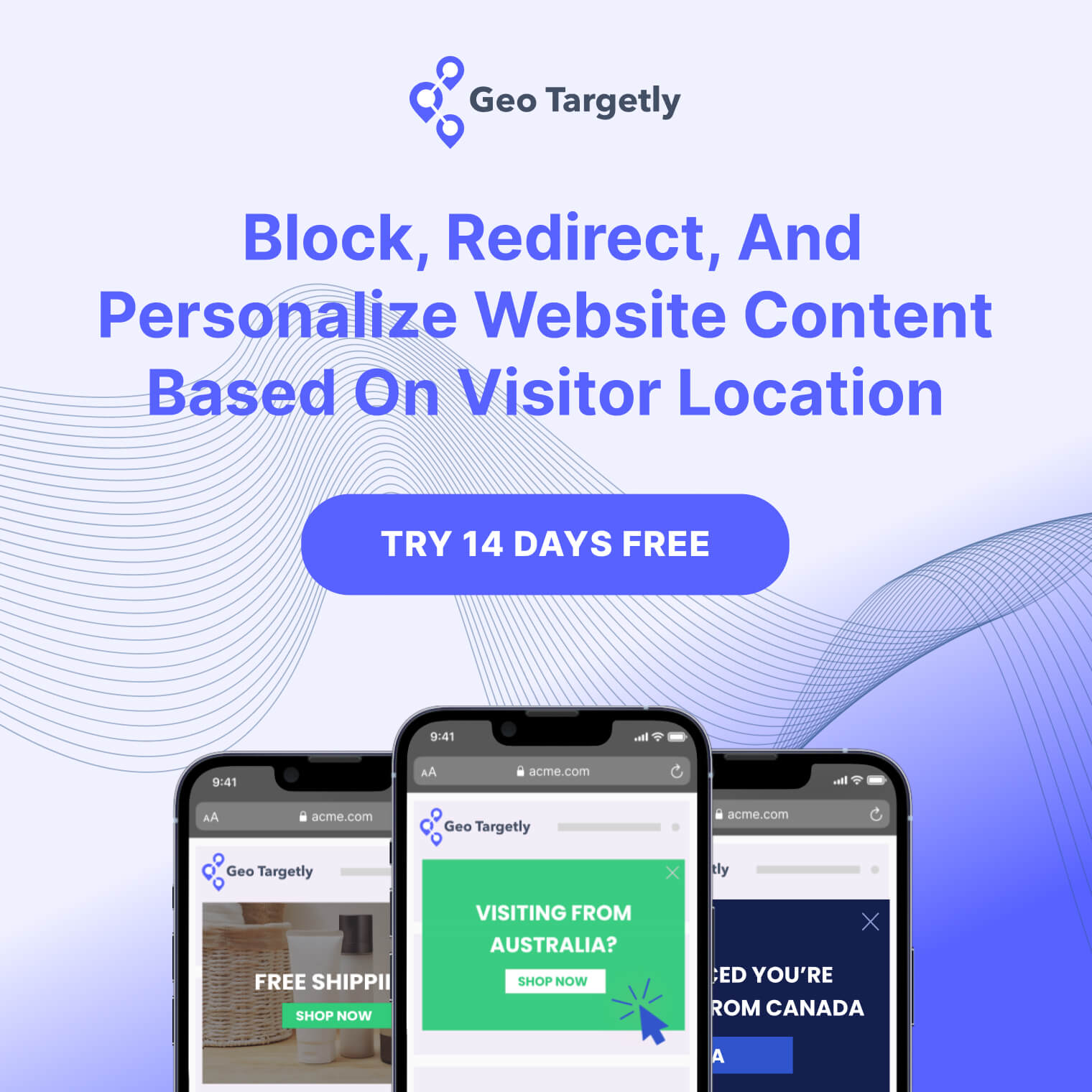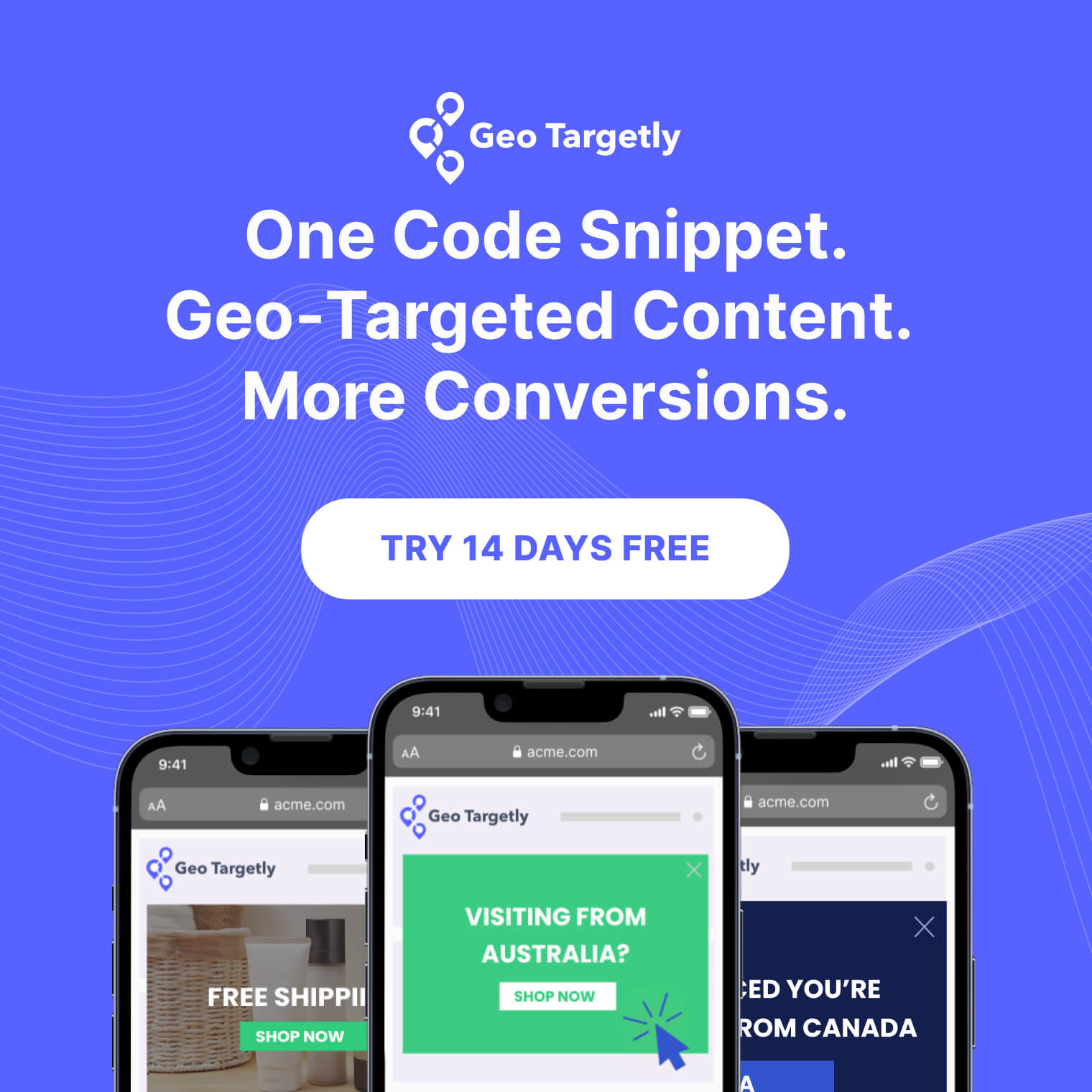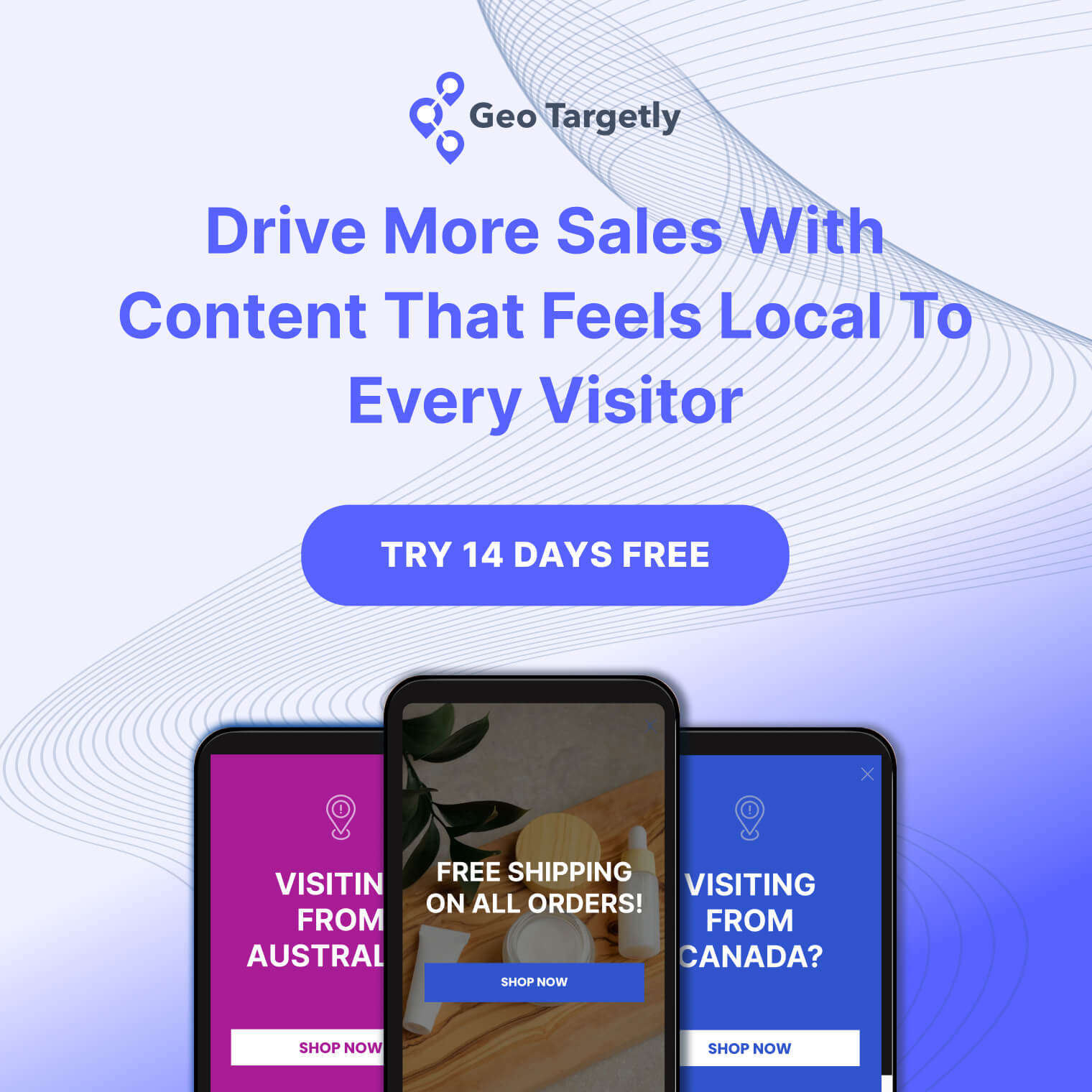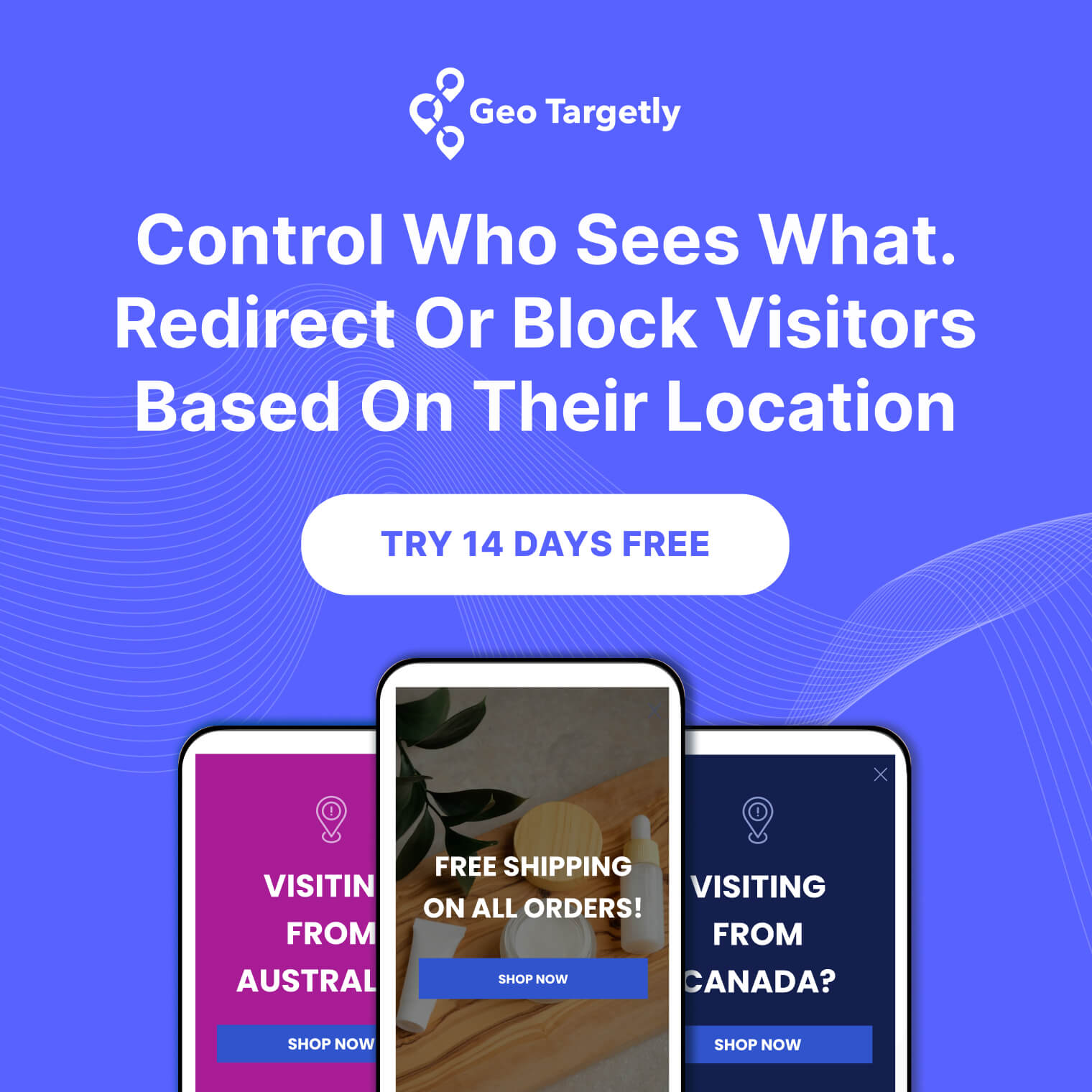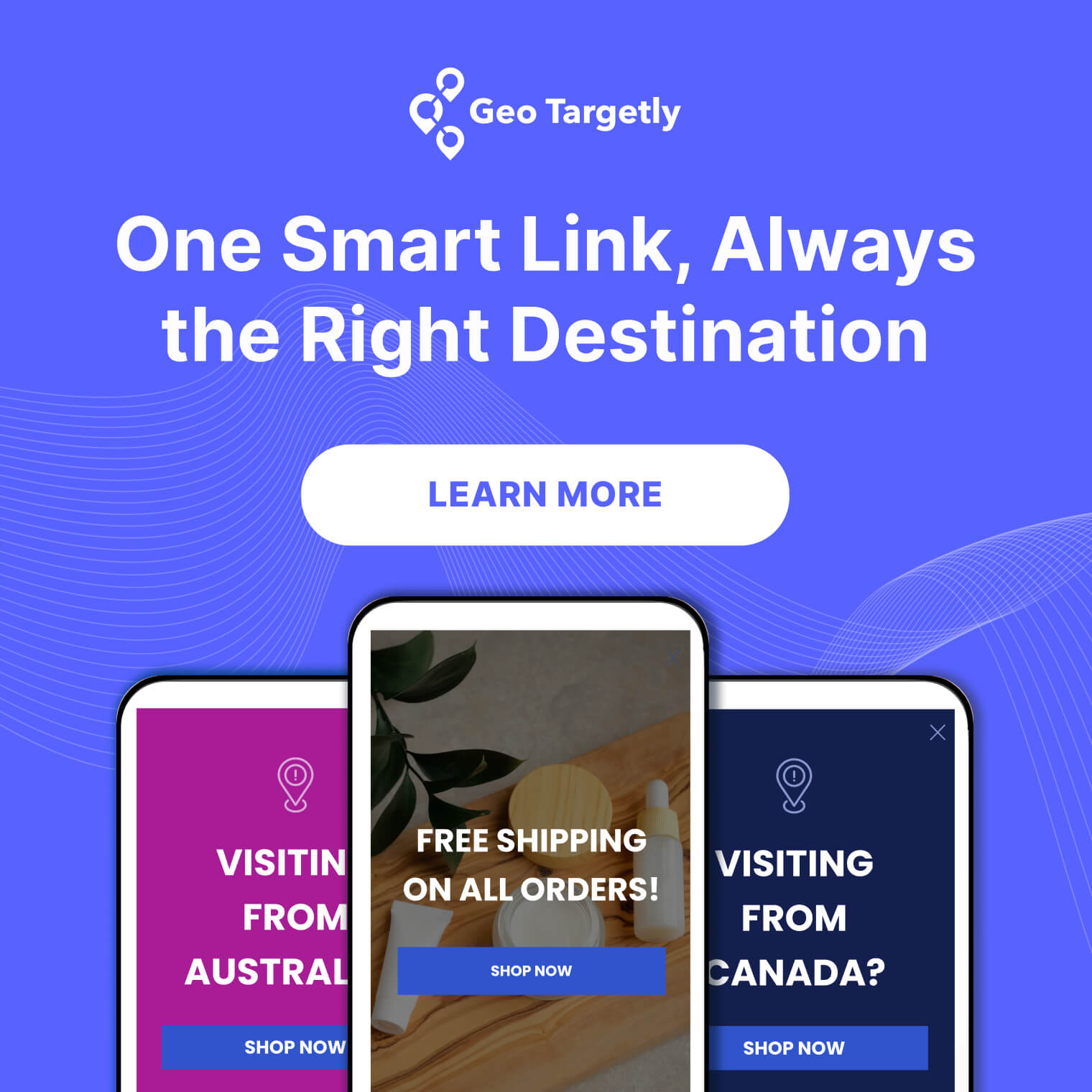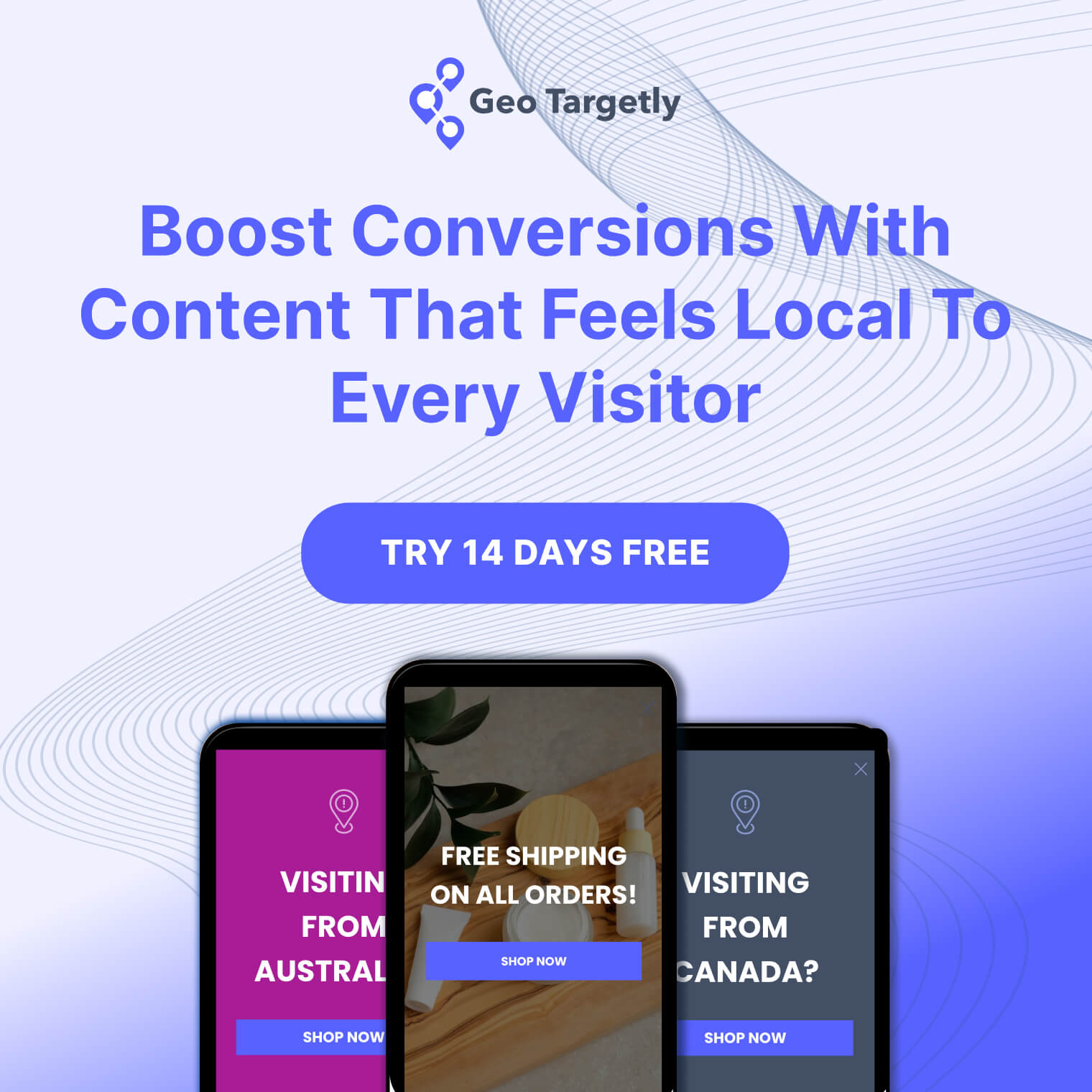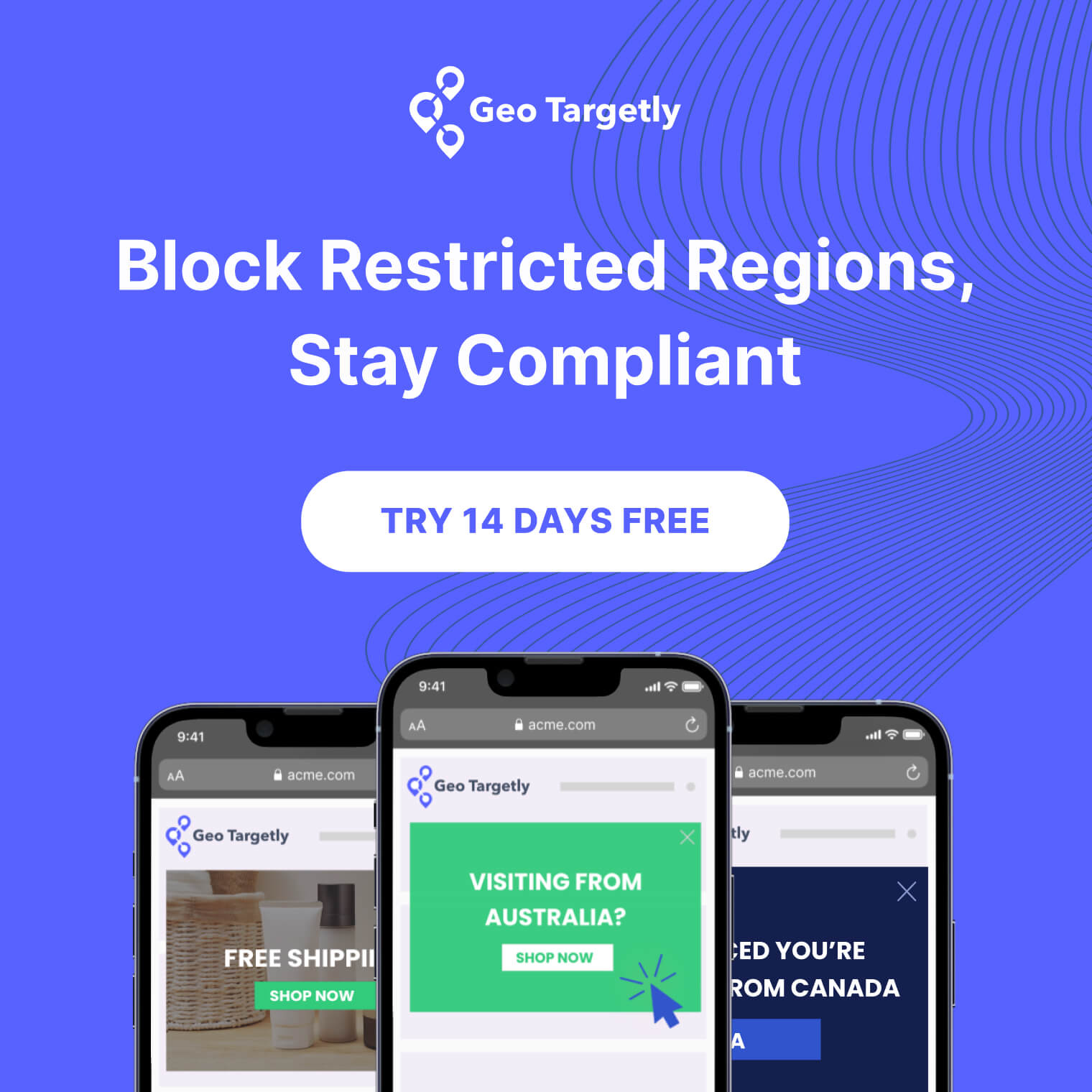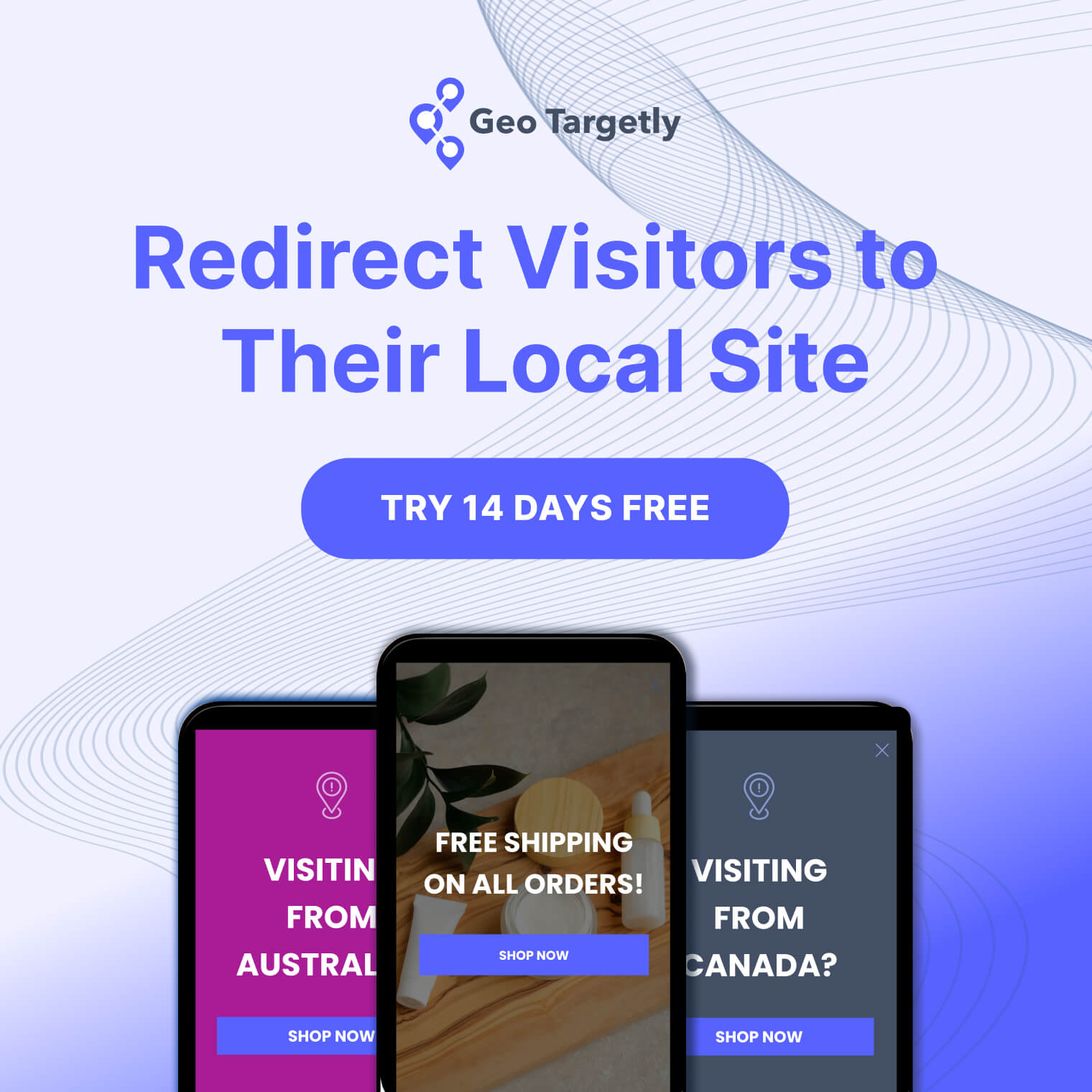

Businesses both large and small can have a difficult time flourishing without the help of digital marketing. With nearly 90% of small businesses having an online presence, standing out amongst the crowd is both difficult and imperative.
One way businesses hone in on their ideal audience and increase sales and engagement is through geomarketing.
What is geomarketing?
Geomarketing is the practice of using location-based data to drive marketing activities and strategies. Analyzing geographical information helps businesses target their audience more effectively, offering personalized content and advertisements based on the consumer’s location.
This marketing approach uses data from various sources, such as GPS systems, IP addresses, and mobile devices, to gather insights about customer behavior, preferences, and demographics in specific areas.
Understanding where their customers are and how they move through physical spaces lets companies optimize their marketing efforts to improve engagement and conversion rates.
Key elements of geomarketing include:
- Location-based advertising: Delivering ads to potential customers based on their real-time location. For example, when users are near a Starbucks location, they receive notifications about special offers, promotions, or nearby store events.
- Geofencing: Setting up virtual boundaries around a specific area to trigger targeted marketing messages when a device enters or exits that area. A retail chain, like Macy’s, can send push notifications to customers’ smartphones when they enter the geofenced area with information about sales or promotions.
- Proximity marketing: Using Bluetooth or Wi-Fi to send messages to devices within a certain range. Airports often use proximity marketing – for instance, an airport might use Bluetooth beacons to send notifications to travelers who are within a certain range of a duty-free shop.
- Geotargeting: Customizing content or advertisements for users based on their geographical location. Food delivery apps like Uber Eats or DoorDash use geotargeting to provide users with restaurant options based on their geographical location. When a user opens the app, it customizes the list of available restaurants and delivery options to their current city or neighborhood.
The integration of geomarketing into business strategies allows companies to provide more relevant and timely offers, giving customers a better experience.
Why & how to use geomarketing
Geomarketing offers several advantages that make it an essential tool for modern businesses:
Better targeting
Using location data, businesses can target their marketing efforts more precisely, reaching customers who are most likely to be interested in their products or services.
This approach is backed by major market growth, with the global geomarketing market projected to grow from $17.29 billion in 2024 to $43.95 billion by 2029.
Additionally, approximately 80% of consumers are willing to share their location data with applications that offer valuable services. With such positive numbers, the geomarketing trend is not to be ignored!
Personalized marketing
Geomarketing allows companies to provide personalized offers and messages for the unique needs and preferences of customers in different locations, increasing customer interest and satisfaction.
For example, Ordotype used geolocation marketing from Geo Targetly to provide localized pricing in their users’ currency, achieving a 400% increase in conversions.
Increased ROI
With more accurate targeting and personalized marketing, businesses can increase their return on investment (ROI) by reducing wasted ad spend and focusing resources on the most promising markets.
Location data can boost the effectiveness of marketing campaigns by up to 80% , and companies using geomarketing solutions have reported significant revenue growth due to better-targeted marketing efforts .
More customer insights
Location data provides specific information about customer behavior, preferences, and trends, helping businesses make informed decisions about product development, store placement, and marketing strategies.
Companies that used geomarketing not only got more valuable data about their users, they also reported a 15% increase in overall engagement and satisfaction.
Competitive advantage
Companies that effectively use geomarketing can gain a competitive edge by being more responsive to market changes and customer needs.
With the clever use of geomarketing, businesses can optimize their marketing efforts, drive customer engagement, and achieve significant growth.
How to use geomarketing
Using geomarketing involves several key steps and strategies:
- Data collection: Gather location-based data from various sources, such as phone calls, GPS systems, mobile devices, social media check-ins, and customer addresses. This data forms the foundation of your geomarketing efforts.
- Data analysis: Analyze the collected data to identify patterns and trends. Use geographic information system (GIS) software to visualize the data on maps and gain deeper insights into customer behavior and preferences.
- Segmentation: Segment your audience based on their location, demographics, and behavior. Create targeted marketing campaigns for different segments to ensure your messages are getting to the right groups.
- Geofencing and proximity marketing: Set up geofences around specific areas, such as your store or a competitor's location, to trigger targeted ads or messages when potential customers enter or leave the area. Use proximity marketing to send offers and promotions to customers' devices when they are nearby.
- Location-based advertising: Use location data to deliver ads to customers in real time. For example, send push notifications to customers near your store, offering a discount or promotion to entice them to visit.
- Monitoring and optimization: Continuously monitor the performance of your geomarketing campaigns. Use analytics tools to measure engagement, conversion rates, and ROI. Adjust your strategies based on the results to improve effectiveness.
Expert tips for geomarketing
To provide additional insights, we reached out to our CPO Jakub Kuba for some words of wisdom on what to do when getting started:
- Use free tools and be picky with localization: "Free tools like Google Analytics can help you identify which two locations bring the most traffic to your site. Instead of trying to localize for every country, focus on your business’ top regions to make the most of your efforts. Concentrating on where your audience is most active will give you better results."
- Start small: "Start small by focusing on the first impression visitors have of your site. For example, you don’t need to localize your entire website right away. Instead, tailor the first content they’ll see – like the headline or images above the fold of your homepage – to their location. This approach makes the experience feel local and relevant, no matter where they’re from. Another pro tip for you: you can do this in a matter of minutes with Geo Image!"
- Work smarter, not harder: Services like Geo Link can make geolocation quick and easy without needing to change your code. Use it to direct visitors to country-specific terms and conditions with just one link. It’s also perfect for social posts and emails, and supports custom domains and link slugs to keep things looking professional. This way, you can supercharge your geomarketing efforts efficiently with minimal effort."
Successful geomarketing use cases
Don’t just take our word for it – have a look at these success stories from companies around the world.
UNIQLO's Facebook check-in chance campaign
In 2012, UNIQLO launched a campaign called "UNIQLO Check-in Chance" using Facebook to drive sales. Customers who checked in at UNIQLO stores on Facebook were entered into a draw to win 100 yen, redeemable during the sales period.
This simple yet effective strategy significantly boosted foot traffic and engagement, resulting in over 200,000 check-ins and sales of over 10 billion Japanese yen in just three days.
The campaign also increased their Facebook page likes by over 10,000.
Domino's Pizza hyperlocal text message advertising
Domino's Pizza used geomarketing to give its advertising a facelift by collecting customer addresses for hyperlocal text message campaigns.
This allowed Domino's to send targeted promotions based on their location, past orders, and deals happening at nearby stores..
This strategy led to higher engagement and more effective advertising, as they could address customers' immediate needs and preferences.
Pokémon Go and local businesses
During the Pokémon Go craze, local businesses capitalized on the game's location-based features by purchasing in-game Lure Modules to attract both virtual Pokémon and real-life customers.
This geomarketing approach increased foot traffic and sales as businesses tapped into the game's massive popularity and created a fun, interactive experience for customers.
Taking advantage of location data in this clever way proved highly effective for driving in-store visits.
Bandai Namco's targeted geomarketing campaign
Bandai Namco effectively used geomarketing from Geo Targetly to enhance their advertising campaigns by targeting specific locations and demographics.
This precise targeting helped them deliver personalized ads that were of interest to their audience, resulting in better engagement and a higher ROI.
You can learn more about Bandai Namco’s success with GeoTargetly in our case study.
Whole Foods' geofencing strategy
Whole Foods, a premium grocery chain based in the US, employed a geofencing strategy to target mobile ads at customers near their stores and competitors' locations.
By creating virtual boundaries, they delivered highly targeted ads that significantly boosted post-click conversion rates, achieving results three times higher than the industry average.
This approach demonstrates the power of targeting specific geographic areas to reach potential customers more effectively and increase conversions.
Geomarketing tools to use
Successful geomarketing requires an arsenal of good tools. Be sure to look for tools that have a large feature set, can work within your budget, and are user-friendly with a guide section.
1. Geo Targetly
Geo Targetly revolutionizes the way you connect with your audience through our advanced suite of geomarketing tools.
Designed to deliver hyper-personalized content based on your visitor’s geographic location, GeoTargetly's features ensure that your marketing efforts are both relevant and engaging.
Best features
- Geo Redirect: Effortlessly guide visitors to the most relevant regional pages by automatically redirecting them based on their geographic location.
- Geo Content: Tailor your website’s text, images, and videos dynamically to reflect the visitor’s location. This personalization increases engagement and relevance, making your content resonate more with each visitor.
- Geo Bars: Communicate important location-specific messages through notification bars that catch your visitor’s attention at the top of the screen. Perfect for local promotions, alerts, or announcements.
- Geo Popups: Deploy popups with targeted messages and offers based on the visitor’s location. This feature is perfect for driving conversions through highly relevant calls to action.
- Geo Block: Manage access to your site’s content based on geographic location to keep compliance with regional laws and policies, or to control the availability of certain content.
Transform the way you engage with your audience through location-based personalization. Try Geo Targetly free for 14 days and discover how targeted content can boost your marketing success.
%2520(2).png)
2. Foursquare
Foursquare is a premier location technology platform that provides powerful tools for location-based advertising and analytics, enabling businesses to gain insights into customer behavior and optimize their marketing strategies.
Best features
- Location data: Access accurate and comprehensive location data to understand customer behavior and preferences.
- Audience targeting: Create targeted advertising campaigns based on precise location data.
- Proximity marketing: Deliver location-based ads to nearby potential customers to drive foot traffic.
- Consumer insights: Detailed analytics and reports on foot traffic patterns, dwell times, and visit frequencies.
3. Google Ads
Google Ads offers excellent location targeting features that allow businesses to reach their audience based on geographic locations. This service helps in driving local traffic and increasing business visibility in specific areas.
Best features
- Geographic targeting: Target ads to specific countries, regions, cities, or a radius around a location.
- Local search ads: Show ads to users searching for businesses in their local area.
- Performance metrics: Track and analyze the performance of location-targeted campaigns.
- Ad customizers: Dynamically update ad text based on the user’s location to enhance relevance.
- Flexible budgeting: Allocate budget to focus on high-performing geographic areas for maximum ROI.
Geomarketing tips & tricks
To maximize the effectiveness of your geomarketing efforts, consider these practical tips:
1. Implement geofencing
Geofencing allows you to create virtual boundaries around specific locations. When customers enter or exit these areas, they can receive targeted notifications or ads. This technique is particularly useful for promoting special offers or events.
2. Optimize for local SEO
Make sure your business appears in local search results by optimizing for local SEO. This includes claiming your Google My Business listing, using location-specific keywords, and encouraging customer reviews.
Monitor the effectiveness of your efforts using the local rank tracker tool. Track changes in your organic and Google Maps rankings over time in specific locations, and see how your business compares to competitors in local search results.
3. Analyze location data
Regularly analyze location data to gain insights into customer behavior and preferences. Use these insights to refine your marketing strategies and improve customer targeting.
For example, a fitness center can analyze data to identify peak hours and send promotions to attract more visitors during off-peak times.
4. Create location-based content
Develop content that resonates with your local audience. This can include blog posts about local events, collaborations with local influencers, or featuring customer stories from the area.
5. Monitor and adjust campaigns
Continuously monitor the performance of your geomarketing campaigns and make adjustments as needed. Use analytics tools to track key metrics such as engagement rates, conversion rates, and ROI.
6. Test and optimize
Conduct A/B testing to determine which geomarketing strategies work best for your business. Test different messages, offers, and targeting methods to optimize your campaigns..
Utilizing these geomarketing tips can greatly improve your marketing strategies, allowing you to connect with your audience more effectively and achieve better results for your business.
Conclusion
Successful geomarketing requires continuous analysis and optimization of campaigns, making sure to stay updated with the latest trends and technologies.
As you explore geomarketing, consider the diverse tools and methods available to create a dynamic and impactful marketing approach. With the right strategies and a focus on delivering value to your audience, geomarketing can drive meaningful results and contribute to the long-term success of your business.
If you’re looking to get started with a wide array of easy-to-use geomarketing tools, be sure to start your 14 day free trial with Geo Targetly!
%2520(2).png)

.png)



.webp)



